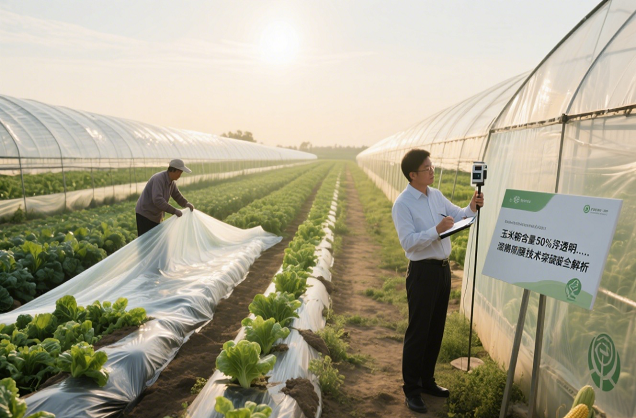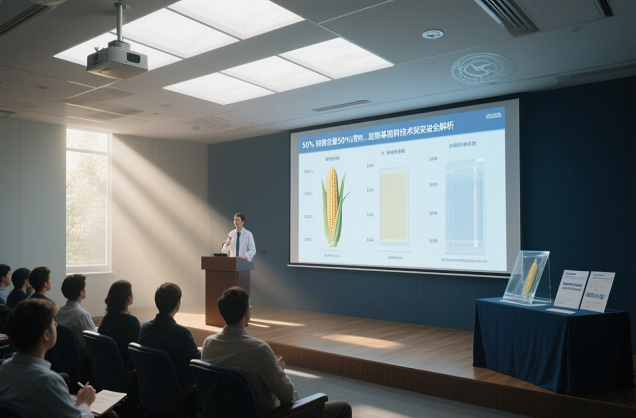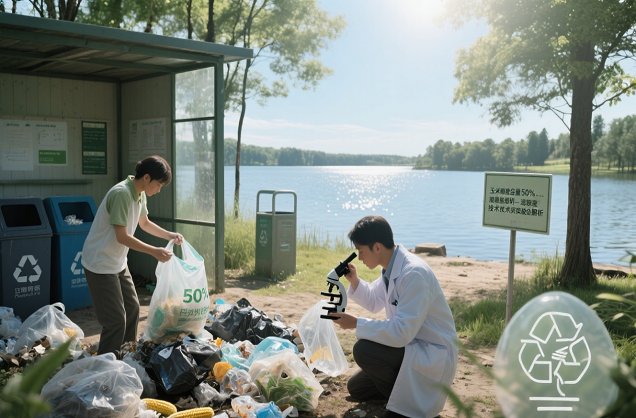Corn starch content of 50% still transparent? Starch-based film technology breakthroughs fully analyzed
In the field of environmentally friendly packaging materials, a major technological breakthrough is rewriting the rules of the industry – the newly developed starch-based film has achieved an astonishing 92% light transmittance, almost comparable to traditional PET plastic film, while maintaining 50% corn starch content. How was this seemingly impossible combination achieved?

I. The core principle of technological breakthrough
1. Nanoscale starch modification technology
The size of traditional starch particles is between 5-100 microns, which will seriously scatter light. The latest technology through:
– Enzymatic-mechanical synergistic treatment: reduce starch particles to 20-50 nanometer size
– Surface graft modification: encapsulation of starch granules with lactic acid oligomers
– Refractive index matching: precise modulation of the optical properties of the material.
2. Multi-layer composite structure design
Adopting innovative ABA three-layer structure:
– Outer layer: high purity PLA to ensure the surface smoothness.
– Middle layer: high content of modified starch.
– Transition layer: molecular level interfacial fusion technology
II. Comparison of key performance indicators
Performance parameters New starch film Traditional starch film PET film
Starch content 50% 20-30% 0
Light transmittance 92% 65-75% 93
Tensile strength(MPa) 45-50 15-25 50-55
Degradation Cycle(Month) 6-12 3-6 400+
Production cost($/kg) 2.8-3.2 1.8-2.2 1.3-1.5

III. Four major application scenarios
1. Food packaging
– Fresh fruits and vegetables transparent packaging
– Instant product visual window
– Highly transparent outer film for bakery products
2. electronic products
– Screen protection film
– Scratch-resistant layer for electronic products
– Flexible display substrate
3. Agriculture
– Highly Transparent Mulch
– Greenhouse covering material
– Specialized film for seedling production
4. Cosmetic Packaging
– Cosmetic transparent packaging
– Detergent visual packaging
– Personal Care Film

IV. Technical Advantages
1. Environmental performance breakthrough
– The proportion of renewable resources in raw materials is 50-55%.
– Carbon footprint is 65% lower than PET
– Completely degraded in 6 months under industrial composting conditions.
2. Optical performance optimization
– Haze value <5% (close to glass)
– Color difference ΔE<1.5 (almost no color shift)
– Adjustable UV transmittance (5-95%)
3. Processing innovation
– Compatible with existing blown film equipment
– Processing temperature window is widened to 160-190℃.
– High speed printing and heat sealing

V. Challenges
1. Technical bottlenecks
– Long-term weatherability needs to be improved
– Performance degradation in high humidity environment
– Ultra-thinning (<15μm) is difficult.
2. Industrialization obstacles
– Insufficient supply of specialized starch raw materials
– High initial production cost
– Recycling system has not been perfected
If you have any questions you want to know, please feel free to come and consult, and we will be eager to answer them for you.
Contact us now
Fill out the form below
We will contact you immediately.

Summarize your business so the visitor can learn about your offerings from any page on your website.
About
Contact
- Add: Room 4006, No.1 Helong Yiheng Road, Baiyun District, Guangzhou City
- Tel: +8613450255948
- Wechat : +86-13450255948
- Fax: +86-13450255948
- E-mail: 13450255948@163.com
